Catocala junctura
kah-TOCK-uh-lahmjunct-YOUR-uh
Walker, [1858]
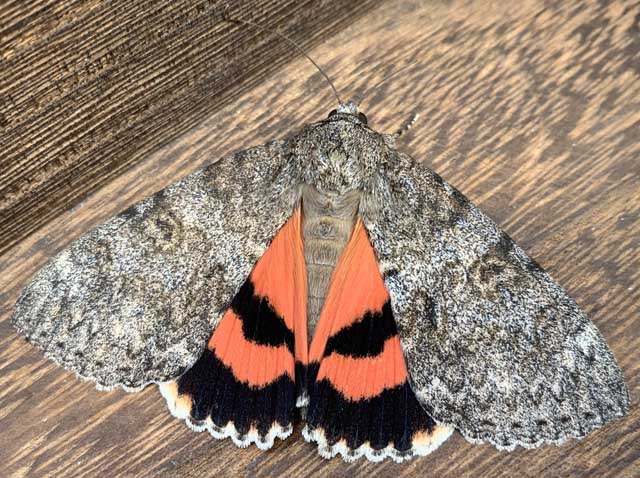
Catocala junctura, Lake County, Indiana.
August 26, 2020, courtey of Matthew Beatty, id confirmed by Larry Gall.
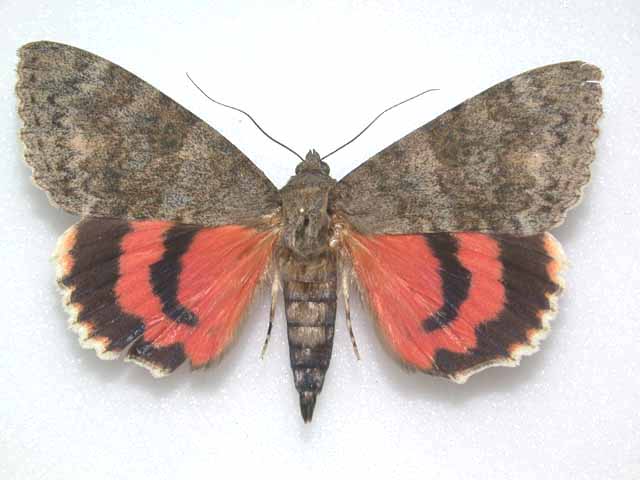
Catocala junctura, Chiricahua National Park, Arizona,
mountains, July 11, 2002, courtesy of Pierre Legault.
This site has been created by Bill Oehlke.
Comments, suggestions and/or additional information are welcomed by Bill.
| TAXONOMY:
Superfamily: Noctuoidea
Family: Noctuidae
Group: Noctuinina
Subfamily: Catocalinae
Genus: Catocala, Schrank, 1802
|
DISTRIBUTION:
Catocala junctura, the Joined
Underwing, (wingspan: 67-85mm), flies from
Pennsylvania south to Kentucky and west to
Kansas and Texas and
Oklahoma and
Arizona and New Mexico and as far north west as
Montana and
into Washington. Records exist for British Columbia, southeastern Alberta,
Manitoba, and I suspect its presence in extreme southern Saskatchewan, but I have no confirmed reports
from Saskatchewan, Canada, and south to southern
California.
It has also been confirmed in
Arkansas,
Colorado,
Idaho,
Illinois,
Indiana,
Iowa,
Michigan,
Minnesota,
Missouri,
Nebraska,
Nevada,
North Dakota,
Ohio,
Oregon,
South Dakota,
Tennessee,
Utah,
Wisconsin and
Wyoming.
Scott Shaw reports junctura is taken (not common) "on Pole Mountain, in the Medicine Bow Forest, Wyoming, about 10 miles east of Laramie near I-80 in
the mountain willow bogs."
David Wikle reports C. junctura August 17, 2003, from Bonita, San Diego County, California.
Catocala elsa, Catocala margherita, Catocala stretchi and Catocala arizonae are
synonymous with C. junctura.
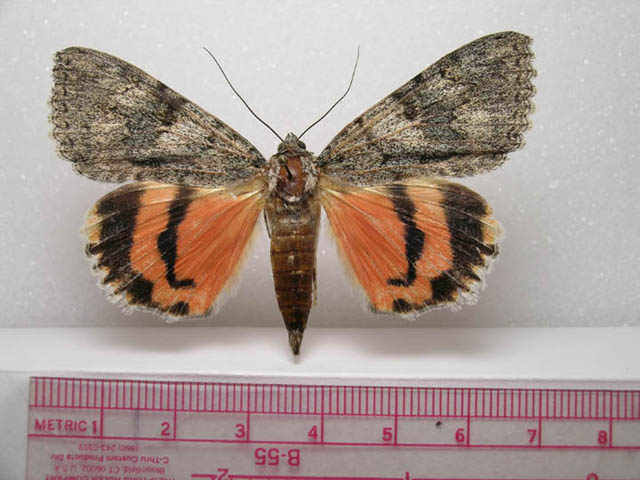
Catocala junctura "julietta", September 12, 2003, Pinnacles National Monument,
San Benito, California, courtesy of Paul Johnson.
The forewing is usually dark brownish-gray to evenly powdered blue-grey without any significant markings.
The doubled reniform spot is often obscure. The thin, slightly darker antemedial and postmedial lines run from
the costa to the inner margin and are not widely spaced at the lower margin.The hindwing is salmon or orange-pink with a
narrow inner black band that turns in sharply but does not meet the dark-haired inner margin, thus distinguishing it from unijuga.
Catocala junctura, courtesy of Bruce Walsh. |
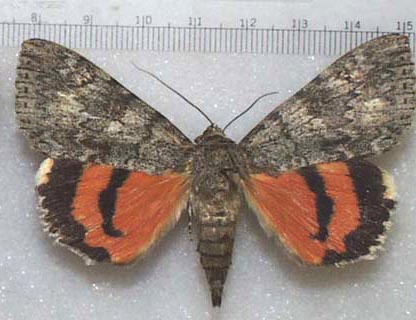 |
Some specimens may have a small separate spot at the lower end as does Catocala meskei. The fringe is white, heavily barred with
black and with some slight "bleeding" of orange. The antennae are simple, and both sexes are essentially alike.
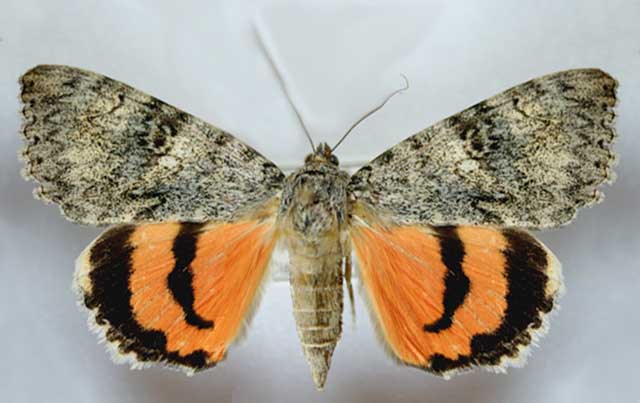
Catocala junctura, Los Angeles County, California, courtesy of Clark Thompson.
Catocala junctura seems more common in western portions of its range and is often encountered hiding in caves.
Form "julietta" French has a darker shade running from the basal area, almost reaching the outer margin of the forewing.
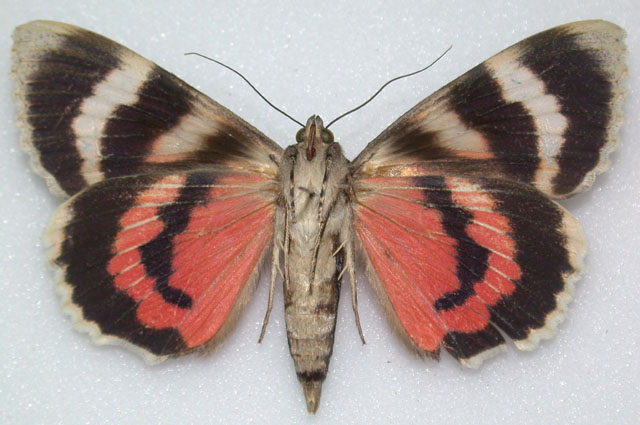
Catocala junctura, Chiricahua National Park, Arizona,
mountains, July 11, 2002, courtesy of Pierre Legault.
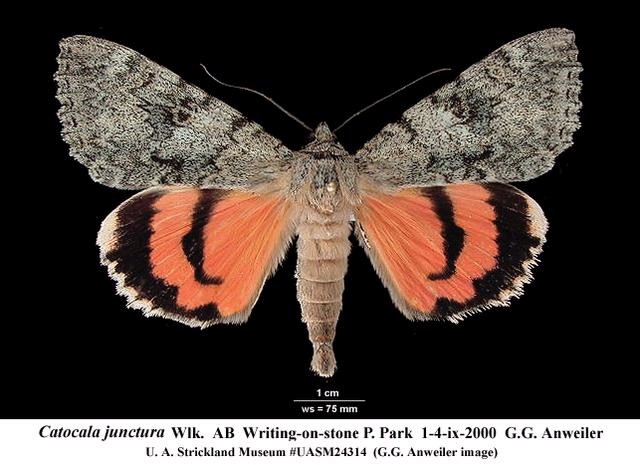
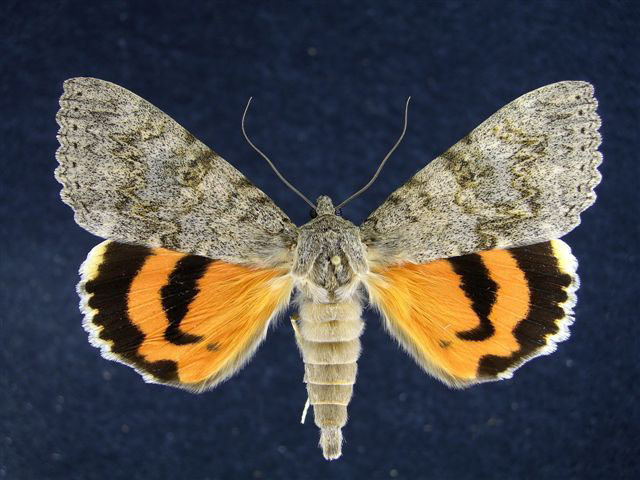
Catocala junctura, Indiana, courtesy of Jim Vargo.

Catocala junctura, Missouri, by Harold J. Vermes, courtesy of
Craig Vermes.
The underside hindwing of Catocala junctura is without a discal lunule.
FLIGHT TIMES AND PREFERRED FOOD PLANTS:
Catocala junctura are on the wing from June (possibly even late May) to early October.
The Catocala junctura caterpillar feeds on willows and poplars.
ECLOSION:
Adults eclose from pupae at soil surface.
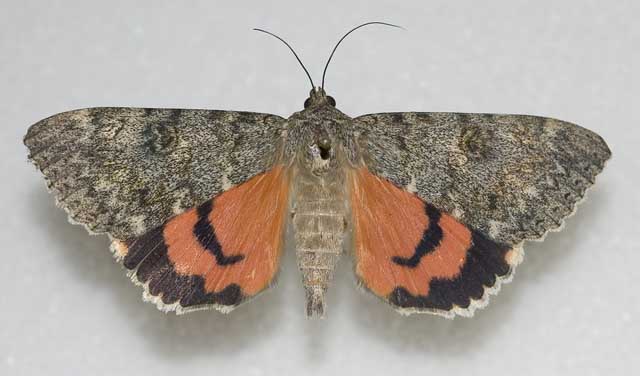
Catocala junctura, Aliso Viejo, Orange County, California,
August 6, 2010, courtesy of Kevin Lentz.
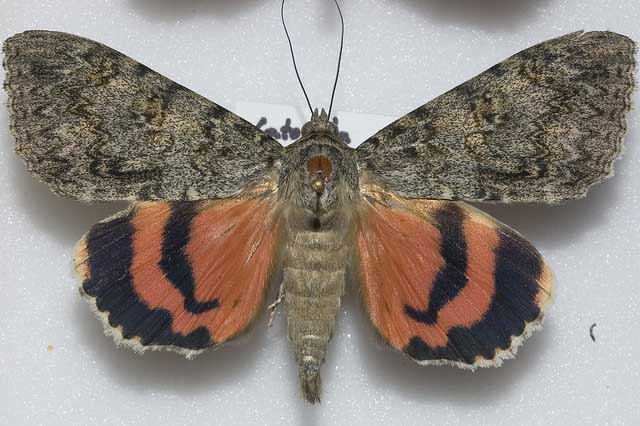
Catocala junctura, Laguna Hills, Orange County, California,
July 24, 2011, courtesy of Kevin Lentz.
SCENTING AND MATING:
Catocala junctura females emit an airbourne pheromone and males use their antennae to track the scent plume.
EGGS, CATERPILLARS, COCOONS AND PUPAE:
Eggs are deposited on tree bark in the fall and hatch the following spring. Larvae are solitary feeders.
Larval Food Plants
Populus
Salix.......
|
Poplar
Willow
|
This page is brought to you by Bill Oehlke and the
WLSS. Pages are on space rented from Bizland. If you would like to become a "Patron of the Sphingidae/Catocala Sites",
contact Bill.
Please send sightings/images to Bill. I will do my best to respond to requests for identification help.
Enjoy one of nature's wonderments: Live Saturniidae (Giant Silkmoth) cocoons.

|

To show appreciation for this site, click on the flashing
butterfly to the left, a link
to many worldwide insect sites. |
Return to Canadian Index
Return to Main Catocala Index












